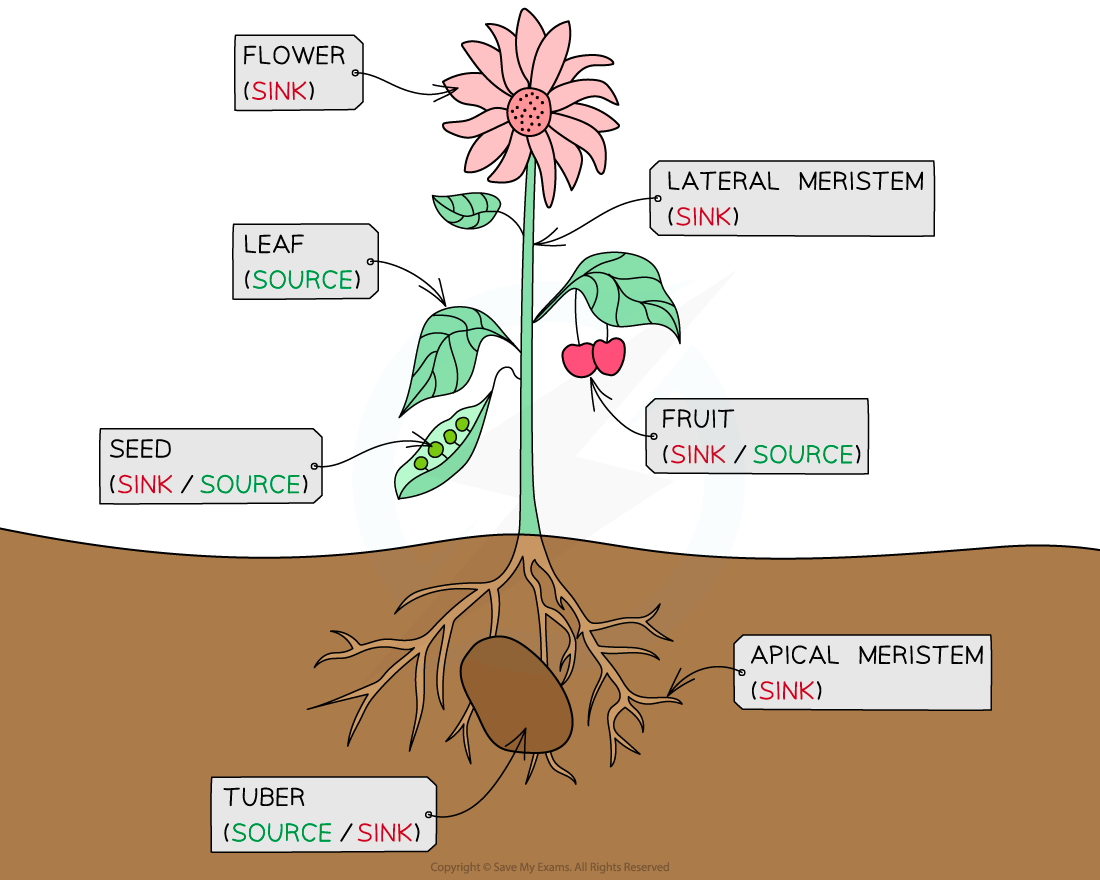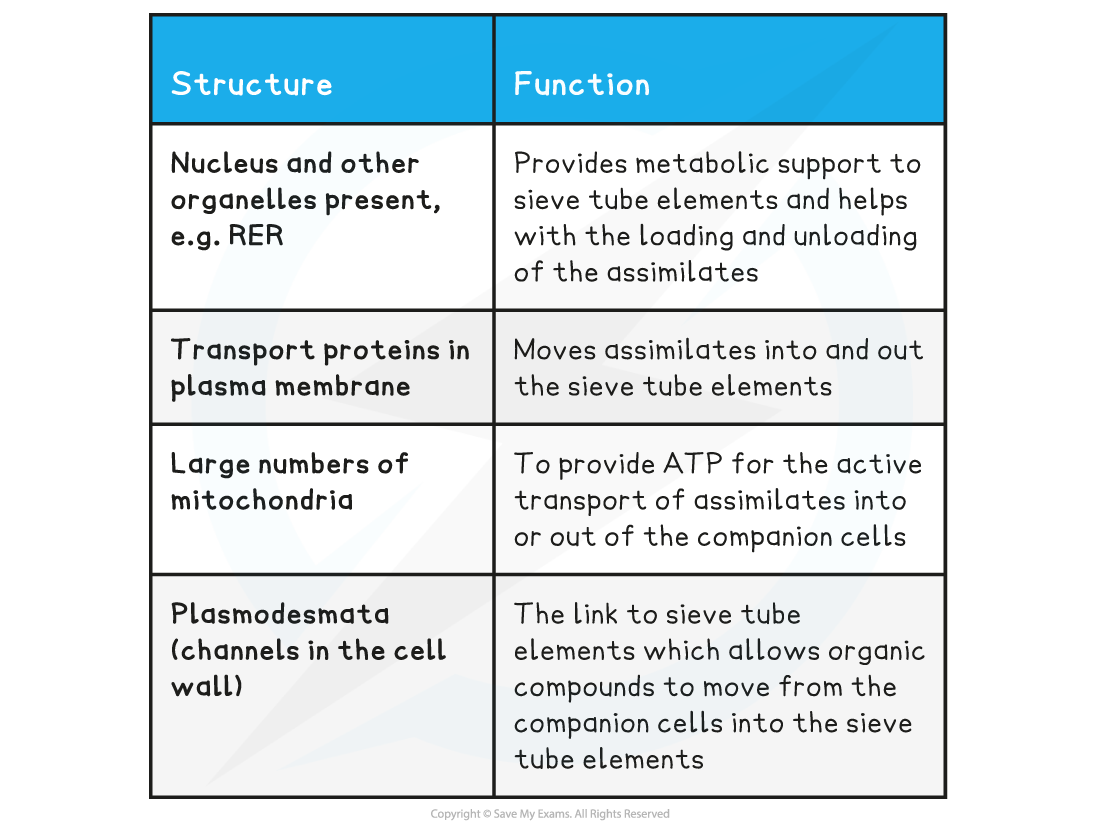- 翰林提供学术活动、国际课程、科研项目一站式留学背景提升服务!
- 400 888 0080
IB DP Biology: HL复习笔记9.2.1 Translocation in Plants
Translocation
- Translocation is the biological term used to describe the transport of organic solutes in the phloem tissue
- The liquid that is being transported within the phloem can be referred to as phloem sap
- This phloem sap consists of sugars in the form of sucrose, along with water and other dissolved substances such as amino acids
- These dissolved substances are sometimes referred to as assimilates
- Translocation within phloem tissue transports these organic compounds from regions known as ‘sources’ to regions known as ‘sinks’
Sources and Sinks
- Sources are the regions of plants in which organic solutes originate; they can include
- Mature green leaves and green stems
- Photosynthesis in these regions produces glucose which is converted into sucrose before being transported
- Storage organs, e.g. tubers and tap roots, unloading their stored substances at the beginning of a growth period
- Food stores in seeds which are germinating
- Mature green leaves and green stems
- Sinks are the regions of plants where organic compounds are required for growth; they can include
- Meristems that are actively dividing
- Roots that are growing or actively taking up mineral ions
- Young leaves in bud
- Any part of the plant where organic compounds are being stored eg. developing seeds, fruits, or storage organs
- Note that sources can become sinks and vice versa, depending on the time of year and the processes taking place inside the plant
 Organic compounds are moved through a plant by the process of translocation. They are moved from source(s) to sink(s).
Organic compounds are moved through a plant by the process of translocation. They are moved from source(s) to sink(s).Translocation is an active process
- The loading and unloading of sucrose and other organic compounds from the source to the phloem, and from the phloem to the sink is an active process, meaning that it requires energy in the form of ATP
- A summary of the process is
- Active transport is used to load organic compounds into the phloem at the source
- The high concentrations of solutes in the phloem at the source cause water to move into the phloem vessels by osmosis
- This results in a raised hydrostatic pressure, which causes the contents of the phloem to flow towards sinks
- Hydrostatic pressure refers to the pressure exerted by a fluid on the walls of its container; in this case the walls of the phloem
Exam Tip
Remember that direction of movement in the phloem is determined by the locations of the source and the sink, so can be either upward or downward.
Phloem Sieve Tubes
- The function of phloem tissue in a plant is to transport organic compounds, particularly sucrose, from sources, e.g. leaves, to sinks, e.g. roots
- The transport of these compounds can occur both up or down the plant
- The organic compounds are dissolved in water to form phloem sap
- Phloem is a complex tissue made up of different cell types; it is mainly made up of sieve tube elements and companion cells
- Sieve tube cells, or elements, line up end-to-end to form a continuous tube through which phloem sap flows
- Companion cells are closely associated with the sieve tube and aid with the loading and unloading of dissolved substances, or assimilates
- Mature phloem tissue contains living cells, unlike xylem cells which are dead at maturity
- Having a functioning cell surface membrane is important in the sucrose loading and unloading process
- The cells that make up the phloem tissue are highly specialised, meaning that their structure aids their function
 Phloem tissue contains sieve tube cells and companion cells
Phloem tissue contains sieve tube cells and companion cellsSieve tube structure and function table

Companion Cell Structure and Function Table


Exam Tip
Understand the difference between sieve tube elements and companion cells, and make sure that you can describe how the structure of sieve tube cells is related to their function.
转载自savemyexams

最新发布
© 2025. All Rights Reserved. 沪ICP备2023009024号-1









